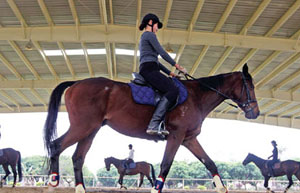Farmers sow the seeds of change
Updated: 2011-12-20 10:54
By Wang Ximin and Zhao Huanxin (China Daily)
|
|||||||||
Removing the snags
Zhang Baoxi, deputy director of the Institute of Vegetables and Flowers at the Chinese Academy of Agricultural Sciences, said foreign companies' advantages in greenhouse vegetables were built on a long history of research and massive investment.
In comparison, Chinese seed breeders began to give priority to greenhouse varieties only in the early 2000s.
"For a long time, Chinese breeders focused only on seeds for outdoor vegetables, especially the crops with higher yields during early growth period," Zhang said. "They somehow unconsciously dropped the strains fit to grow in greenhouses."
Unlike in foreign countries, the major players in seed breeding in China are institutes at universities and academies, rather than enterprises, he said.
It usually takes at least 10 years to develop a vegetable variety, but seed researchers in these institutes are often funded by government projects that last about three years. This means researchers spend much energy seeking new projects to maintain funding, Zhang said.
Some institutes run their own companies, usually to finance research, but often without forging tight links with the market, he said.
"It is safe to say that China's whole input in vegetable research is less than that in a single foreign company," Zhang said. For instance, Syngenta spends roughly $1 billion on research and development annually, according to a company statement.
For China's vegetable industry to thrive, it must protect intellectual property rights, both Zhang Baoxi and Shen Huolin said.
"Sometimes you have developed a popular new variety, but in less than three years, you'll find that the area sown in this variety through illegal seed distributors is far greater than the area with seeds from legal channels," Zhang said.
Some individuals even steal technology, Shen said. "For example, by combining the excellent traits of two varieties, both of which were obtained through illegal means, individuals could easily concoct a hybrid with better quality than the original."
Shen claimed that some vendors paid cash to breeding farmers who had grown Zhongshou-12 peppers in his production base outside Beijing to get nearly all the seeds they harvested this year.
"I should have gotten several thousand kilograms of seeds, but I haven't gotten a single gram," he said.
The seed bureau's Liao Xiyuan vowed the Ministry of Agriculture would foster large seed companies in China through acquisition. At least 8,700 seed companies are registered in China, but only a small fraction are large and have adequate R&D capacity, the bureau said. The country will also "drastically" invest in development while improving extension service and market regulation, Liao said.
Looking ahead
Back in Shandong, the Shouguang Vegetable Industry Group invested 150 million yuan last year to set up a seed company, including a pilot base for vegetable breeding, said Tang Mingtao of the city's science and technology bureau.
The Zhongshou-12 pepper variety developed by Shen Huolin's team has now been planted in at least 667 hectares, more than half of the chili pepper-growing area in Shouguang.
Asked about the goal in the coming five years, Shen said he anticipated Chinese seeds would be used in 30 percent of all greenhouse vegetable planting area in this "showcase of China's vegetable industry".
Ju Chuanjiang and Zhao Ruixue in Shandong contributed. Write to wangximin@chinadaily.com.cn and zhaohuanxin@chinadaily.com.cn.











